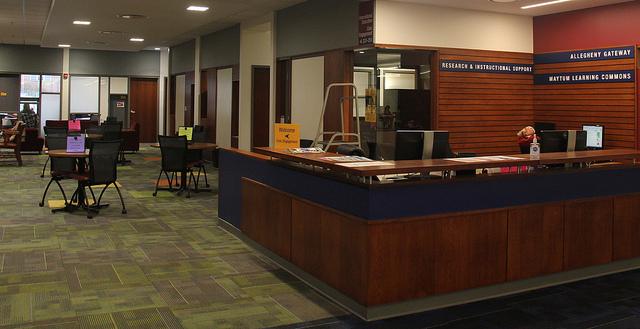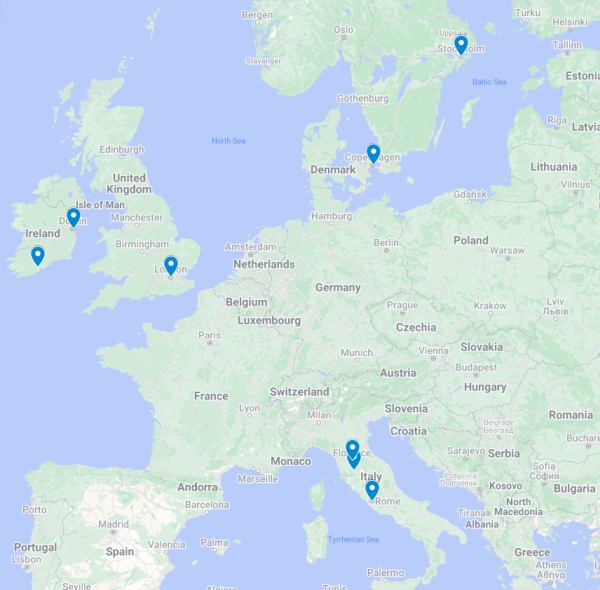Chinese students share opinions on how to create a more multicultural atmosphere on campus
Recently moved to the Pelletier Library, the Allegheny Gateway provides various resources to help international students adjust to American life, such as an orientation, English as a second language classes, and more.
The Chinese and greater international community at Allegheny is diverse in its combination of people from multiple countries, backgrounds, religious beliefs and lifestyles. These students transcend cultural and linguistic barriers every day to experience and learn in a new country. Some students, however, choose to transfer due to personal reasons or because of the great shock that comes with moving from a large city, such as Beijing, to Meadville.
At the Community at Allegheny meeting on Dec. 8, Xiaoling Shi, assistant professor of modern and classical languages mentioned that she was concerned that Chinese students were not being provided with an apt or welcoming environment.
She later added, “I was directly involved [in] three cases of leave of absence which made me think a lot.”
Her concern, however, has not been entirely supported by many Chinese students who have found refuge in their own interest in learning and with the help of programs provided by the learning commons at the Pelletier Library.
International students are provided with a network of resources and opportunities when they step on campus, which is funneled primarily through the Learning Commons. The network it provides is expansive and includes a multitude of resources, specifically through the Gateway program.
According to the Allegheny website, “Gateway programs foster intellectual enrichment, cross cultural and global engagement, civic and social responsibility, ethical development, career exploration and personal growth.”
Led primarily by Rebecca Dickinson, director of the learning commons, Jenny Kawata, director of international education and Lenee McCandless, international student and scholar adviser, this board provides international students with English as a Second Language classes, an orientation before school starts specialized in introducing students to cultural norms, check-in meetings, food over breaks when students cannot go home and help for students with individual issues.
The Gateway provides a close-knit community which helps students acclimatize to America’s individualistic culture after coming from more community-focused societies.
With the international students being so far from home, Kawata attempts to provide familial support.
“We are often their only family members here…I am the first person they call [if they need help]…It is a very personal style of advising,” Kawata said.
Aleäa Reyes, ’18, is an American-born student who grew up in Hong Kong, finds these attempts successful. She feels that the people working in international student services make sure she is taken care of.
“Jenny and Lenee are really helpful,” Reyes said, adding. “For us that can’t go home for break, they make sure we have meals… They are basically on call for almost anything.”
The Gateway works beyond the acclimation of international students and encourages multicultural learning for American students as well.
“The Gateway is focused on expanding opportunities for students for study abroad, civic engagement, intercultural learning,” said Kawata, and shared that the Gateway motto is “Expand, Integrate and Apply.”
Dickinson co-taught ESL classes with Kawata up until fall of 2014.
“It means doing more for them than a writing consultant would do,” Dickinson said. “Focusing on the transition to America and providing a place for these students to practice English and feel comfortable.”
Dickinson believes that the transition of cultures and town sizes often accounts for a great deal of stress for international students.
“The most difficult thing for Chinese students is coming from a big city and expecting New York City,” Dickinson explained.
Once the students arrive and find what a small town Meadville is, they have to readjust from what they are used to.
Other issues international students face relate to understanding social contracts and the ways Americans form friendships.
“People tend to form friendships really fast…Sometimes coming from another country slows that process down,” Reyes said. “By the time you are ready to approach people, people have already formed their groups.”
Ye Yuan, ’18, finds that the biggest challenge is in reaching out and finding what to talk about with American students.
“I find difficulty in how to talk to other people,” said Yuan. “How to say ‘Hi’ and how to hold a conversation.”
Much like Yuan, Xiao Yuzhu, ’18, often feels like she has not been able to immerse herself completely into American culture.
“I sometimes feel like a foreigner and I can’t get into the culture,” she said.
However, Yuzhu does not feel that it is impossible for her to acclimate eventually.
“Just the living habits are different and I don’t believe it is very hard to overcome this difference,” Yuzhu explained.
According to Kawata, Associate Provost for Diversity and Organizational Development Ande Diaz is working on creating new intercultural training opportunities among students, faculty and administration. These intercultural education workshops will take place in the near future with the hope of bringing new opportunities to learn about each other’s cultures.
Regardless of these issues, many of these students share a fundamental passion for learning both within their classes and the American culture and believe that the best way to combat insecurities among international students is by combining the multitude of cultures which exist on campus.








